 Libri di Robert Forczyk su Unilibro.it) Libri di Robert Forczyk su Unilibro.it)
|
|
2025 |
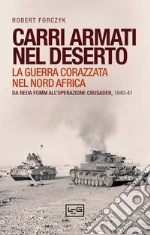 Title :
Carri armati nel deserto. La guerra corazzata nel Nord Africa. Da Beda Fomm all'operazione Crusader, 1940-41
Title :
Carri armati nel deserto. La guerra corazzata nel Nord Africa. Da Beda Fomm all'operazione Crusader, 1940-41Author: Forczyk Robert Publisher: LEG Edizioni Per molti aspetti, la guerra nel deserto nordafricano rappresentò la parte tecnologicamente più avanzata degli scontri nella Seconda guerra mondiale. Fu anche l'unico teatro in cui per tre anni le truppe britanniche e del Commonwealth, e in seguito degli Stati Uniti, furono in costante contatto con le forze dell'Asse. In questo libro Robert Forczyk esplora la prima metà della storia della campagna, dall'iniziale offensiva italiana e dall'arrivo del Panzergruppe Afrika di Rommel fino all'offensiva britannica dell'Operazione Crusader che portò alla liberazione di Tobruk. Esamina le forze corazzate, l'equipaggiamento, la dottrina, l'addestramento, la logistica e le operazioni impiegate dalle forze alleate e dell'Asse durante tutto il periodo, concentrandosi in particolare sulle attività a livello di brigata e di reggimento. Corredato da fotografie, illustrazioni tattiche e cartine, nonché da appendici che analizzano i dati relativi ai carri armati, le consegne di mezzi corazzati sul campo e gli ordini di battaglia, questo libro offre una nuova prospettiva sulla guerra nel deserto nordafricano, uno dei teatri più cruciali dell'intero conflitto. € 28,00
Scontato: € 26,60
|
|
|
2024 |
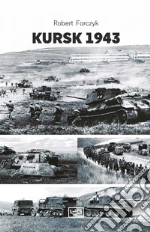 Title :
Kursk 1943
Title :
Kursk 1943Author: Forczyk Robert Publisher: LEG Edizioni Nell'estate del 1943, in ritirata dopo la sconfitta a Stalingrado, Hitler scelse di mettere in atto una circoscritta offensiva per eliminare il controllo sovietico sul saliente di Kursk. Nel corso di un classico attacco a tenaglia sul modello del successo ottenuto nella campagna di Kharkov del 1942, l'obiettivo era infliggere all'Armata Rossa perdite che consentissero alla Wehrmacht tempo a sufficienza per recuperare le forze. Ma la pronta reazione sovietica condusse a perdite elevatissime da ambo le parti, grazie alle mine anticarro russe e a un fiero combattimento che portò a liberare Orel. Il testo riunisce i due studi di Forczyk sull'argomento, il primo dei quali affronta l'azione sul fronte settentrionale tra il 5 luglio e il 18 agosto, con lo scontro fra il generale Model e il generale Rokossovsky, mentre il secondo esamina l'azione a meridione e la battaglia di Prochorovka, tra le più sanguinose della Seconda guerra mondiale. Fonti documentarie riguardanti entrambi gli schieramenti, fotografie d'epoca e contemporanee, mappe accurate e illustrazioni accompagnano una narrazione esaustiva e precisa, in grado di rendere chiara e appassionante una fase decisiva per l'esito della guerra. € 24,00
Scontato: € 22,80
|
|
|
1919 |
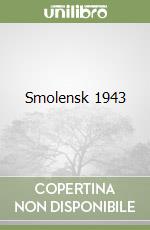 Title :
Smolensk 1943
Title :
Smolensk 1943Author: Robert Forczyk Publisher: OSPREY € 17,90
|
 Title :
Case Red
Title :
Case RedAuthor: Robert Forczyk Publisher: OSPREY € 15,50
|
|
1918 |
 Title :
We March Against England
Title :
We March Against EnglandAuthor: Forczyk Robert Publisher: Osprey Pub Co € 14,30
|
 Title :
Panzer Ace
Title :
Panzer AceAuthor: Von Rosen Richard Freiherr, Patterson Nigel (NRT), Forczyk Robert (FRW) Publisher: Tantor Media Inc € 36,10
|
 Title :
Panzer Ace
Title :
Panzer AceAuthor: Von Rosen Richard Freiherr, Patterson Nigel (NRT), Forczyk Robert (FRW) Publisher: Tantor Media Inc € 27,70
|
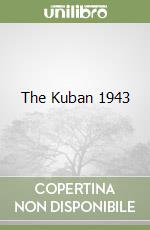 Title :
The Kuban 1943
Title :
The Kuban 1943Author: Forczyk Robert, Noon Steve (ILT) Publisher: Osprey Pub Co € 17,90
|
||
|
2018 |
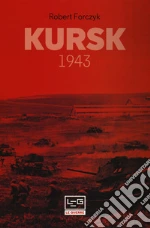 Title :
Kursk 1943
Title :
Kursk 1943Author: Forczyk Robert Publisher: LEG Edizioni Nell'estate del 1943, in ritirata dopo la sconfitta a Stalingrado, Hitler scelse di mettere in atto una circoscritta offensiva per eliminare il controllo sovietico sul saliente di Kursk. Nel corso di un classico attacco a tenaglia sul modello del successo ottenuto nella campagna di Kharkov del 1942, l'obiettivo era infliggere all'Armata Rossa perdite che consentissero alla Wehrmacht tempo a sufficienza per recuperare le forze. Ma la pronta reazione sovietica condusse a perdite elevatissime per ambo le parti, grazie alle mine anticarro russe e a un fiero combattimento che portò a liberare Orel dai tedeschi. Il testo riunisce i due studi Osprey sull'argomento, il primo dei guali affronta prima l'azione sul fronte settentrionale tra il 5 luglio e il 18 agosto, con lo scontro fra il generale Model e il generale Rokossovsky, mentre il secondo esamina l'azione a meridione e la battaglia di Prochorovka, tra le più sanguinose della Seconda guerra mondiale. Fonti documentarie riguardanti entrambi gli avversari, fotografie d'epoca e contemporanee, mappe accurate e illustrazioni accompagnano una narrazione esaustiva e precisa, in grado di rendere chiara e appassionante una fase decisiva per l'esito della guerra. € 24,00
|
|
|
1917 |
 Title :
Case Red
Title :
Case RedAuthor: Forczyk Robert Publisher: Osprey Pub Co € 23,90
|
 Title :
Case Red
Title :
Case RedAuthor: Forczyk Robert, Page Michael (NRT) Publisher: Tantor Media Inc € 27,10
|
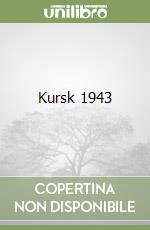 Title :
Kursk 1943
Title :
Kursk 1943Author: Forczyk Robert, Turner Graham (ILT) Publisher: Osprey Pub Co € 17,90
|
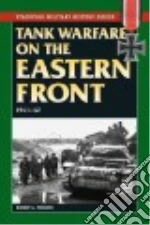 Title :
Tank Warfare on the Eastern Front 1941-1942
Title :
Tank Warfare on the Eastern Front 1941-1942Author: Forczyk Robert A. Publisher: Stackpole Books The German panzer armies that stormed the Soviet Union in 1941 were an undefeated force that had honed its tactics to a fine edge. The panzers defeated the Red Army's tanks again and again and combined with German infantry and aircraft to envelop millions of Soviet soldiers. But the Red Army's armored forces regrouped and turned the tables in 1942. € 19,60
|
||
|
1916 |
 Title :
We March Against England
Title :
We March Against EnglandAuthor: Forczyk Robert Publisher: Osprey Pub Co € 23,70
|
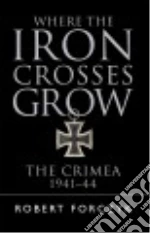 Title :
Where the Iron Crosses Grow
Title :
Where the Iron Crosses GrowAuthor: Forczyk Robert Publisher: Osprey Pub Co € 13,20
|
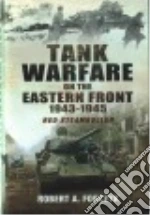 Title :
Tank Warfare on the Eastern Front 1943-1945
Title :
Tank Warfare on the Eastern Front 1943-1945Author: Forczyk Robert A. Publisher: Pen & Sword € 35,70
|
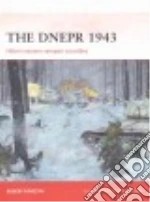 Title :
The DNEPR 1943
Title :
The DNEPR 1943Author: Forczyk Robert, Noon Steve (ILT) Publisher: Osprey Pub Co Against the wishes of Hitler, German forces under Erich von Manstein were forced to retreat following the failure of their offensive at Kursk in July 1943. The weakened force had only one possible refuge, behind the wide Dnepr River. The race to the natural defensive line was on, with the Soviets launching one of their largest offensives of the war--with over two million men on the move. Expert Eastern Front historian Robert Forczyk describes the dramatic four-month campaign that saw the Red Army not only succeed in crossing the Dnepr at multiple points, but also liberate Kiev, the capital of the Ukraine. Revealing new details about the largest Soviet airborne operation of the war and the increasingly desperate delaying tactics employed by von Manstein as catastrophic casualties mounted on either side, Forczyk charts the course of the battle that confirmed that the relentless Soviet advance westward could not be halted. Berlin would be next. € 21,40
|
||
|
1915 |
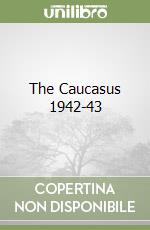 Title :
The Caucasus 1942-43
Title :
The Caucasus 1942-43Author: Forczyk Robert, Noon Steve (ILT) Publisher: Osprey Pub Co Much has been written of the titanic clashes between the Wehrmacht and the Red Army at Stalingrad, but this volume tells the other, equally important half of the story ofFall Blau (Case Blue). Learning from their experiences during the sweeping advances of OperationBarbarossa a year before, Wehrmacht commanders knew that Nazi Germany's lack of oil was a huge strategic problem. Seizure of the Caucasus oilfields, which were responsible for 82% of the Soviet Union's crude oil, would simultaneously alleviate the German army's oil shortages whilst denying vital fuel resources to the Red Army. While Army Group B advanced along the Volga towards Stalingrad, Army Group A, spearheaded by Ewald von Kleist's elite Panzerarmee 1 was to advance into the Caucasus to seize the oilfields of Maikop, Grozny and Baku. Featuring full-color artwork, archival photos and detailed analysis, this book follows the vicious, intense fighting that characterized one of the most important campaigns of World War II. € 20,30
|
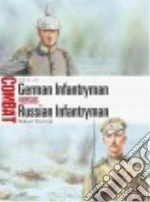 Title :
German Infantryman Versus Russian Infantryman 1914-15
Title :
German Infantryman Versus Russian Infantryman 1914-15Author: Forczyk Robert, Hook Adam (ILT) Publisher: Osprey Pub Co The Eastern Front of World War I is sometimes overshadowed by the fighting in the West. But the clashes between Imperial Germany and Tsarist Russia in East Prussia, Poland and Lithuania were every bit as gruelling for the participants as the great battles in Western Europe. In spite of the crushing German victory at Tannenburg in August 1914, the war in the East would grind on for two more years. Featuring full-color artwork, specially drawn maps and archive photographs, this study assesses the tactics, leadership and combat performance of German and Russian footsoldiers fighting in battles at Gumbinnen, Göritten and Mahartse, revealing the evolving nature of infantry warfare on the Eastern Front during World War I. € 14,20
|
|
1914 |
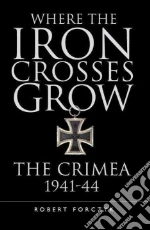 Title :
Where the Iron Crosses Grow
Title :
Where the Iron Crosses GrowAuthor: Forczyk Robert Publisher: Osprey Pub Co Nazi and Soviet armies fought over the Crimean Peninsula for three long years using sieges, dozens of amphibious landings, and large scale maneuvers. This definitive English-language work on the savage battle for the Crimea, Where the Iron Crosses Grow sheds new light on this vital aspect of the Eastern Front. The Crimea was one of the crucibles of the war on the Eastern Front, where first a Soviet and then a German army were surrounded, fought desperate battles and were eventually destroyed. The fighting in the region was unusual for the Eastern Front in many ways, in that naval supply, amphibious landings and naval evacuation played major roles, while both sides were also conducting ethnic cleansing as part of their strategy - the Germans eliminating the Jews and the Soviets to purging the region of Tartars. From 1941, when the first Soviets first created the Sevastopol fortified region, the Crimea was a focal point of the war in the East. German forces under the noted commander Manstein conquered the area in 1941-42, which was followed by two years of brutal colonization and occupation before the Soviet counteroffensive in 1944 destroyed the German 17th Army. € 23,20
|
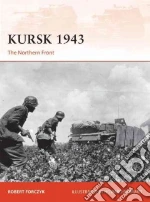 Title :
Kursk 1943
Title :
Kursk 1943Author: Forczyk Robert, Noon Steve (ILT) Publisher: Osprey Pub Co Kursk 1943 focuses on the northern front and the battle of Kursk, and period of July 5th to August 18th, 1943, covering both the German offensive and the Soviet counteroffensive - Model's AOK 9 pitted against General Konstantin Rokossovsky's Central Front. After recovering from the Stalingrad debacle, Hitler intended to conduct a limited objective offensive (using the new Panther and Tiger tanks) in the summer of 1943 in order to eliminate the Soviet Kursk salient. He intended to conduct a classic pincer attack of the kind that succeeded during the 1942 Kharkov campaign and hoped that the resulting heavy loss of troops and material inflicted on the Red Army would give the Wehrmacht time to recover its strength. Hitler chose two of his best field commanders - Generalfeldmarschall Erich von Manstein and Generaloberst Walter Model - to lead the two pincers against the Kursk salient in Operation Zitadelle. Manstein would attack from the south with Heeresgruppe Süd, while Model attacked from the north with his heavily reinforced AOK 9. Model was not in favor of the offensive because he believed the Soviet defenses were too dense, but he dutifully mounted a full-scale offensive from 5 to 10 July 1943. Model's forces included two battalions of the new Ferdinand tank destroyers and a battalion of Tiger tanks, but were only capable of chewing its way through the first line of Soviet defenses. Although Model had failed to accomplish a breakthrough, his forces were far from spent. When the Soviets mounted their own Operation Kutusov to collapse the German-held Orel salient, Model had sufficient forces left to conduct a fighting retreat back to the Hagen Line. By 18 August 18th 1943, the Soviets had liberated Orel and pushed Model's forces back, but suffered over 400,000 casualties and the loss of 2,500 tanks. The Germans had succeeded in gaining a tactical victory that mauled three Soviet tank armies, although the Red Army had achieved an operational-level victory by liberating Orel. € 19,60
|
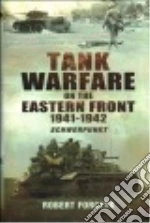 Title :
Tank Warfare on the Eastern Front, 1941-1942
Title :
Tank Warfare on the Eastern Front, 1941-1942Author: Forczyk Robert A. Publisher: Pen & Sword * Graphic reassessment of the greatest tank war in history * Describes the development of armored warfare during the first phase of the fighting on the Eastern Front. * In-depth analysis of tank actions in the major campaigns of 1941-42 including Leningrad, Moscow, Kiev, Kharkov, Stalingrad and the Caucasus € 37,00
|
|
1913 |
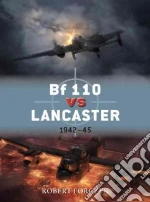 Title :
Bf 110 Vs Lancaster
Title :
Bf 110 Vs LancasterAuthor: Forczyk Robert, Laurier Jim (ILT), Hector Gareth (ILT) Publisher: Osprey Pub Co Unable to conduct ground operations on the European continent until Allied strength was marshalled for a full-scale invasion, the British government based its grand strategy in World War II on a protracted campaign of aerial bombardment of Nazi Germany's cities in order to bring the Third Reich to its knees. At the heart of this strategy were the emerging technologies of the heavy bomber, combined with night-navigation and precision-bombing techniques. The RAF introduced the huge four-engined Avro Lancaster in 1942 and used it to spearhead this aerial offensive. In response, the Luftwaffe created an elite nightfighter force based primarily upon the Bf 110 to counter the RAF bombers. Although the Bf 110 had failed miserably as a day fighter over England in 1940, it found its niche as a nightfighter. The Luftwaffe was quick to equip it with airborne radar that allowed it to intercept and destroy Lancasters over Germany. In turn, the RAF adopted countermeasures such as the Monica rearward-looking radar to alert Lancaster crews to the approach of nightfighters. The Lancaster heavy bomber was equipped with rear and dorsal turrets that gave it some chance to drive off nightfighters employing the standard tactic of attacking from above and behind. In May 1943, though, the Luftwaffe suddenly developed a novel technical and tactical approach to attacking RAF bombers - the Schräge Musik weapon system, which mounted upward-firing 20mm cannons in a Bf 110 nightfighter. The new tactic proved amazingly successful, and British bombers could be attacked from below with no warning. Soon, the Luftwaffe decided to equip a third of its nightfighters with Schräge Musik and began to inflict grievous losses upon Lancaster bomber units in the period from August 1943 to March 1944. For its part, the RAF failed to detect the new German tactic for six crucial months, during which time its Lancaster bombers were almost defenceless against this new threat. In time, however, the German advantage of surprise was lost and the RAF developed countermeasures to deal with the new threat. The duel between upgraded Bf 110s and Lancasters in the night skies over Germany became increasingly dominated by cutting-edge technology, which would determine the efficacy of strategic bombing. € 19,60
|
 Title :
Kharkov 1942
Title :
Kharkov 1942Author: Forczyk Robert, Gerrard Howard (ILT) Publisher: Osprey Pub Co After failing to finish off the German Army in the 1941/42 Winter Counteroffensive and aware that Hitler was planning a new summer offensive in mid-1942, Stalin directed the Red Army to conduct a powerful blow in one sector of the Eastern Front in order to disrupt German plans. The sector chosen was Kharkov, where the Soviet Southwestern Front had seized bridgeheads over the Donets River and Heeresgruppe Süd appeared vulnerable. Under Stalin's trusted military advisor, Marshal Semyon Timoshenko, the Stavka's remaining reserves were assembled and prepared to conduct a breakthrough attack intended to encircle the German Sixth Army near Kharkov. However, Stalin was unaware that the Germans were planning their own riposte at Kharkov, known as Operation Fredericus. When Timoshenko began his offensive in May 1942, he did not realize the limitations of his own forces or the agility of the Germans to recover from setbacks, all of which contributed to one of the Red Army greatest defeats of World War II. The German victory at Kharkov also contributed to the Wehrmacht's ability to push to the Volga River, once the Red Army was seriously weakened along the Donets. This volume will pay particular attention to intelligence and logistics issues, as well as how this campaign served as a prelude to the battle of Stalingrad. It will also focus on the nascent development of the Red Army's tank corps and 'deep battle' tactics, as well as the revival of the German Panzertruppen after Barbarossa. € 20,30
|
|
1912 |
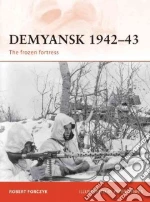 Title :
Demyansk 1942-43
Title :
Demyansk 1942-43Author: Forczyk Robert, Dennis Peter (ILT), Cowper Marcus (EDT) Publisher: Osprey Pub Co The fighting around the town of Demyansk was one of the longest encirclement battles on the Eastern Front during the Second World War, stretching from February 1942 to February 1943. Originally, the German 16. Armee occupied Demyansk in the fall of 1941 because it was key terrain - a crossroads located on high ground amidst a sea of swampy terrain - that would be used as a springboard for an eventual offensive into the Valdai Hills. Instead, the Soviet winter counteroffensive in February 1942 encircled the German II Armeekorps and other units, totalling about 100,000 troops, inside the Demyansk Pocket. Another pocket was also created around Kholm, with another 5,000 Germans inside. Yet despite severe pounding from five Soviet armies, the embattled German troops held the pocket and the Luftwaffe organized a major aerial resupply effort to sustain the defenders. For the first time in military history, an army was supplied entirely by air. After stopping the Soviet winter counteroffensive, the German 16. Armee mounted two major relief efforts to rescue their trapped forces in the Demyansk and Kholm pockets, which were finally relieved in April-May 1942. During the siege, the crack 3. SS-Division 'Totenkopf' was virtually destroyed, suffering 80 per cent casualties. However, Hitler demanded that the 12 divisions of II Armeekorps remain in the narrow Demyansk salient, whose base was only 6km wide. Throughout the summer and autumn of 1942, the Soviets pounded the salient from all sides, inflicting heavy casualties on the defenders. In February 1943, Marshal Timoshenko was ordered to launch an offensive to cut off the base of the salient and annihilate the 12 divisions. At the same time, Hitler finally came to his senses after the Stalingrad debacle and authorized the 16. Armee to withdraw from the pocket. Thus, the Germans began to withdraw just as Timoshenko opened his grand offensive to cut them off and destroy almost 100,000 German troops. This volume will conclude with the drama of a German army-size withdrawal under fire in winter, under attack from three sides. € 20,30
|
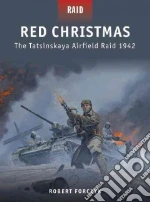 Title :
Red Christmas
Title :
Red ChristmasAuthor: Forczyk Robert Publisher: Osprey Pub Co In mid-December 1942, the Soviets had surrounded the German 6th Army in Stalingrad but the Wehrmacht was engaged in a desperate relief effort with Operation Winter Storm and an airlift. The Soviet Stavka moved to defeat both these German efforts in order to ensure the rapid destruction of the 6th Army and to maintain strategic momentum. As part of the effort to defeat the airlift, the Soviet Stavka decided to launch a deep raid with the entire 24th Tank Corps to seize the airfield at Tatsinskaya, the primary operating base for the German airlift. On 17 December 1942, the 24th Tank Corps advanced toward Tatsinskaya and seized the airfield on Christmas Eve. The Soviet tankers managed to destroy many Luftwaffe aircraft on the ground, but afterwards found themselves isolated and out of fuel behind German lines. Generalfeldmarschall Erich von Manstein rapidly organized a counterattack with elements of two panzer divisions, crushing most of the raiding force between 26-28 December. Just before the raiding force was annihilated, they received permission to abandon their heavy equipment and escape back to Soviet lines on foot. Thus, the raiders accomplished their mission of severely disrupting the airlift to Stalingrad, but at the cost of decimating an entire tank corps. € 17,00
|
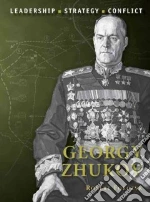 Title :
Georgy Zhukov
Title :
Georgy ZhukovAuthor: Forczyk Robert, Hook Adam (ILT) Publisher: Osprey Pub Co Zhukov was the dominant figure in the Red Army during World War II even though his actual job title varied from day to day. Serving as a senior General Staff representative from the Stavka, Zhukov moved from one critical sector to the next, serving as advisor, coordinator and de facto front commander as required. There is no doubt that Zhukov played a critical role in salvaging the critical situation in the fall of 1941 and leading the Red Army to an amazing reversal of fortunes in 1942-43 and eventual victory in 1944-45. He was instrumental in the initial defence of Leningrad, before moving to Moscow to stem the German advance and lead the counterattack in the winter of 1941. In 1942-43 he was responsible for Operation Uranus that cut off the German 6. Armee in Stalingrad, and led the defence of the Kursk Pocket against Manstein's attacks. His was the voice of reason and patience that convinced Stalin to let the Germans expend themselves at Kursk before launching the Soviet offensive that drove the Germans back hundreds of miles and almost broke the German Army inthe Ukraine. Without him Kursk would never have been fought as a defensive battle by the Russians. In 1944 he led the massive Soviet Operation Bagration that destroyed the German Heeresgruppe Mitte and continued on in command of front through to the end of the war, which saw him become the first post-war Soviet commander in East Germany. However, Zhukov's methods were brutal and contributed to massive Soviet casualties, while he continued to keep his hand in political affairs as well. As the most recognized Soviet soldier of World War II, Zhukov's post-war fall from grace was equally precipitous and it was not until the fall of the Soviet Union that he was awarded his reputation was restored. € 17,00
|
|
1911 |
 Title :
Nez Perce 1877
Title :
Nez Perce 1877Author: Forczyk Robert, Dennis Peter (ILT) Publisher: Osprey Pub Co Osprey's examination of one of the most famous battles of the latter part of the American Indian Wars (1622-1918). With the wars between the US and the Native Americans drawing to a close, one tribe in Eastern Oregon continued to resist. The Nez Perce, led by the 'Red Napoleon' Chief Joseph, refused to surrender and accept resettlement. Instead, Chief Joseph organized a band of 750 warriors and set off for the Canadian border, pursued by 2,000 US Army troops under Major-General Oliver Howard. The army chased the natives for three months, fighting 13 actions. Finally, just 40 miles from the Canadian border, the Army ran Chief Joseph to the ground, and forced him to surrender after a five-day battle near Bear Paw Mountain. € 17,00
|
|
|
1910 |
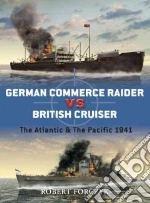 Title :
German Commerce Raider Vs British Cruiser
Title :
German Commerce Raider Vs British CruiserAuthor: Forczyk Robert, Palmer Ian (ILT) Publisher: Osprey Pub Co This is the account of the machines of war pitted against each other and the combatants who operated them. Step onto the battlefield and immerse yourself in the experience of real historic combat. During World War II, the German Kriegsmarine armed a number of merchant vessels with concealed guns and torpedo tubes for surprise attacks against Allied shipping. From the Atlantic to the Pacific, these Hilfskreuzer commerce raiders prowled the sea lanes, luring Allied vessels into range through their innocuous appearance and the flying of false flags, before opening fire with devastating salvoes of gunfire and torpedoes. To counter this deadly threat, the Royal Navy employed cruisers equipped with specially-developed intelligence-gathering apparatus to find and destroy the disguised German vessels, resulting in many dramatic battles between the two types of hunter. With first-hand accounts, technical details, and operational analysis, this Duel title is an in-depth study of this deadly game of cat and mouse, fought across the globe at the height of World War II. € 17,60
|
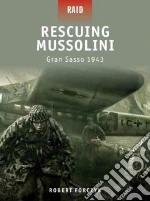 Title :
Rescuing Mussolini
Title :
Rescuing MussoliniAuthor: Forczyk Robert Publisher: Osprey Pub Co The successful rescue of imprisoned Italian dictator Benito Mussolini from atop the Gran Sasso plateau by German glider-borne troops on 12 September 1943 was one of the most dramatic Special Forces operations in military history. Arrested by his own officers in July 1943, Mussolini had been whisked away to an isolated and heavily-guarded mountain-top resort, the Hotel Campo Imperatore at Gran Sasso, which could only be reached by a heavily guarded cable car station. It was clear to the Germans - who wished to rescue Mussolini in order to keep at least the appearance that Italy was still on the Axis side - that any conventional rescue operation would have to fight its way through too much opposition and that Mussolini's captors would have ample time to execute him before he could be rescued. However, the Waffen SS had begun to develop the genesis of a commando-style raiding force that appeared suitable for the mission. Once Mussolini's location at Gran Sasso was confirmed, Hitler ordered the assault force, led by SS Haupsturmführer Otto Skorzeny, to conduct a rescue mission to extract Mussolini alive from the mountaintop. Despite unfavorable terrain for a gliderborne landing - including large boulders and steep cliffs near the landing zone - most of the German gliders succeeded in landing atop the Gran Sasso and the assault force was able to move in before the stunned Italian defenders could organize a response or eliminate Mussolini. Adding to the successful assault, Skorzeny was able to organize a desperate and ad hoc extraction plan using a light Fiesler Storch aircraft, when failed communications scuttled the pre-planned extraction method. At great risk, Mussolini was flown off the mountain and Skorzeny's raiding force had achieved all their objectives without firing a shot. Although the rescue of Mussolini failed to keep Italy on the Axis side, it did serve as a valuable propaganda boost for Germany in the face of defeats in Italy and the Soviet Union, as well as pointing toward a new dimension in warfare. This title details the strategic context of this daring raid, the origins of the plans, and the initial strategy adopted by the German Special Operations forces, before going on to describe in full detail the plan, execution and final outcome of the operation. Forczyk also offers a complete and comprehensive analysis of the events and their aftermatch, along with suggestions for further reading. Discover the history of this classic wartime raid, which continues to fascinate military history enthusiasts and lovers of adventure, in this new addition to the Raid series by Robert Forczyk. € 17,60
|

|

|

|